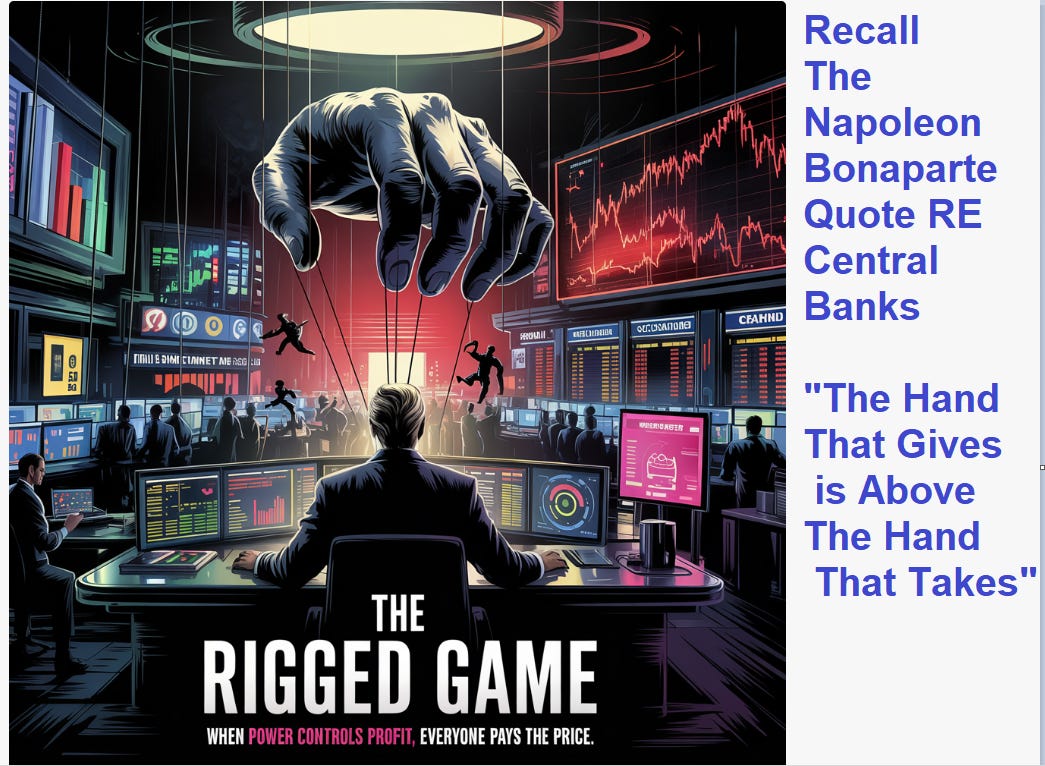Gold Drops Like a Rock When People Trust the System. It Soars to the Moon When They Don’t
Gold and Silver, The ultimate Chaos Detector.
In the past week alone, the U.S. stock market has been a battlefield of volatility. I believe that the ruling class uses social media posts, press releases, and soundbites to crash equities. When the bottom is reached, the President can simply send out a new tweet, press release, or soundbite to send the markets soaring. Only the President knows what he will say next, so once again, we have evidence that the ruling class (political elites) is manipulating market
Since President Trump unveiled sweeping tariffs, an estimated $9.6 trillion has been wiped out from the market, including a staggering $5 trillion drop over just two days—April 2 and April 4—marking the largest two-day loss in history. The Dow Jones Industrial Average bore the brunt of this chaos, plunging 1,700 points in one session and another 349 points shortly after.
The rapid-fire policy shifts have left corporate leaders and investors reeling. Within just three business days, we’ve seen tariffs on Chinese goods escalate from 50% to an astronomical 145%, only to be followed by exemptions for electronics that were later rescinded. The uncertainty is palpable: if you were a CFO of a Fortune 500 company, would you approve any new investments in a country where policy changes are as unpredictable as a coin toss?
This instability has sent investors scrambling for safe havens such as gold, which soared to an unprecedented $3,238 per troy ounce this week—its largest single-day percentage increase since April 2020. Historically, gold’s value surges when trust in economic systems falters. It’s no coincidence that during periods of geopolitical tension or financial crises, gold has consistently been viewed as a refuge from uncertainty. Conversely, when markets are stable and trust in governance prevails, gold often languishes.
The American Worker: Unprepared for Reshoring
The chaos surrounding tariffs has reignited discussions about reshoring manufacturing jobs to the U.S., but here lies another critical issue: America’s workforce is woefully unprepared for such a shift. Over decades of offshoring, vocational training programs have atrophied while other nations have honed their technical expertise. Today, 85% of new manufacturing jobs require specialized skills that many American workers simply do not possess.
If we were to reshore production tomorrow, it would be akin to fielding an NFL team whose players spent the preseason binge-watching Netflix and drinking sugary lattes while their competitors were lifting weights and running drills. The analogy is apt: just as professional athletes require rigorous preparation to compete at an elite level, so too must workers undergo extensive training to meet modern manufacturing demands.
America’s workforce challenges are further compounded by cultural shifts. The work ethic that once defined American labor has eroded under decades of service-oriented employment models. Many workers today struggle with even basic task execution—whether it’s fulfilling an Instacart order correctly or showing up on time for a shift at Target. Without significant investment in vocational education and skills-based hiring practices, the dream of reshoring will remain just that—a dream.
The Historical Lens: Trust and Economic Stability
History teaches us that trust in institutions underpins economic stability. During World War II, America’s manufacturing might was unrivaled because its workforce was skilled, disciplined, and supported by robust public policies. Today, however, that foundation has crumbled under years of neglect. The current tariff-induced turmoil is emblematic of a broader erosion of trust—not just in trade policy but in America’s ability to adapt and compete globally.
When trust falters, gold soars; when trust prevails, it plummets. This dynamic is not merely economic—it is psychological and cultural. For America to regain its footing as a global manufacturing powerhouse, it must rebuild trust through consistent policies and invest heavily in its workforce. Otherwise, we risk becoming spectators in an arena we once dominated.
In conclusion, America faces a pivotal moment. Will we continue down a path of reactive policymaking and unprepared labor forces? Or will we take proactive steps to restore stability and competitiveness? Even if US got its house in order (1 in thousand chance) Gold and Silver will still soar because of the debt crisis and the next round of currency debasement (whether it’s called QE, some event that we call printing)
end of segment
our opinions are not our sponsors opinions
editorial department is separate from promotions department
not financial advice
Buy Gold and Silver, This Bull Run is Just Getting Started





